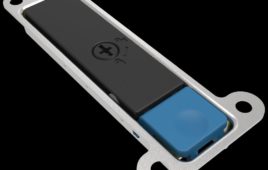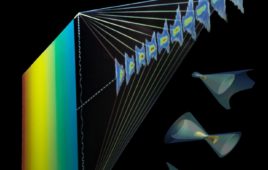The MulteFire Alliance has done away with the necessity for an anchor in licensed spectrum in its new Release 1.0 specification, enabling LTE operation using unlicensed spectrum alone.
Building on 3GPP’s Release 13 Licensed Assisted Access requirements for the downlink and Release 14’s enhanced LAA for the uplink, MulteFire Alliance’s 1.0 spec for the first time defines LTE to operate in unlicensed and shared spectrum only in the 5 GHz and 3.5 GHz bands. Additional bands are expected to be added down the line as regulatory bodies across the globe free up more shared spectrum suitable for MulteFire.
“By eliminating the requirement for licensed spectrum, MulteFire will enable innovation around the world with a number of exciting new use cases – from deploying a standalone network in an underground mine for industrial IoT applications to ensuring robust connectivity for mobile broadband,” MulteFire Alliance Board Chair and Vice President Stephan Litjens said in a statement. “With Release 1.0, the Alliance is delivering on its promise of a new way to wireless.”
Release 1.0 lays out an end-to-end architecture for the technology, and includes a number of capabilities to enhance what MulteFire has to offer and ensure fair sharing with existing technologies like WiFi.
Like LAA, the specification implements a Listen-Before-Talk protocol to both make sure MulteFire shares the unlicensed spectrum fairly and ensure coexistence between different MulteFire networks. Additionally, the spec allows for either a neutral host setup – to allow multiple carriers to utilize a single deployment – or a traditional access model for a single operator. Under Release 1.0, MulteFire would also support a range of LTE services, including Voice-over-LTE and high-speed mobile broadband.
According to MulteFire Alliance President Mazen Chmaytelli, the specification brings the best of both worlds from both LTE and WiFi to the table.
“From the LTE side you get the performance and quality of service, and reliability of LTE that consumers are accustomed to but also to leverage from WiFi the simplicity of deployment where you can have a commercial grade WiFi deployment or a mom and pop shop or people putting together WiFi in their homes,” Chmaytelli said.
Initially, Chmaytelli predicted the MulteFire ecosystem will be built up by the likes of operators, cable companies, and large enterprises looking to build their own private networks, and noted the MulteFire specification is built to facilitate a seamless handover to operator networks when users leave MulteFire coverage areas. And since the spec is designed for use in the global unlicensed 5 GHz band, Chmaytelli said operators could use MulteFire to expand their roaming capabilities.
Rather than individual deployments on the roaming point, Chmaytelli envisioned a scenario where an operator would partner with a large hotel or restaurant chain that offers MulteFire to boost coverage. Down the line, though, Chmaytelli said he also sees a space for the technology to be used for the Internet of Things and home consumer devices.
According to Chmaytelli, the MulteFire Alliance tried to minimize the difference between MulteFire and LTE as it was developing the specification over the past year. This, he said, will allow vendors who already work on LTE products to “see the delta” between the two and provide a faster route through product development.
Release 1.0 is currently available to MulteFire Alliance members – including Boingo Wireless, CableLabs, Cisco, Comcast, Ericsson, ExteNet, Huawei, Intel, Nokia, Qualcomm, Ruckus Wireless, SoftBank, and SpiderCloud Wireless, among others – but will be made available to the public in mid-2017, Chmaytelli said.
Though no products were announced alongside the spec release, Chmaytelli commented the development of a certification process is underway and he could see trials occurring in the second half of 2017.
Filed Under: Telecommunications (spectrums)




